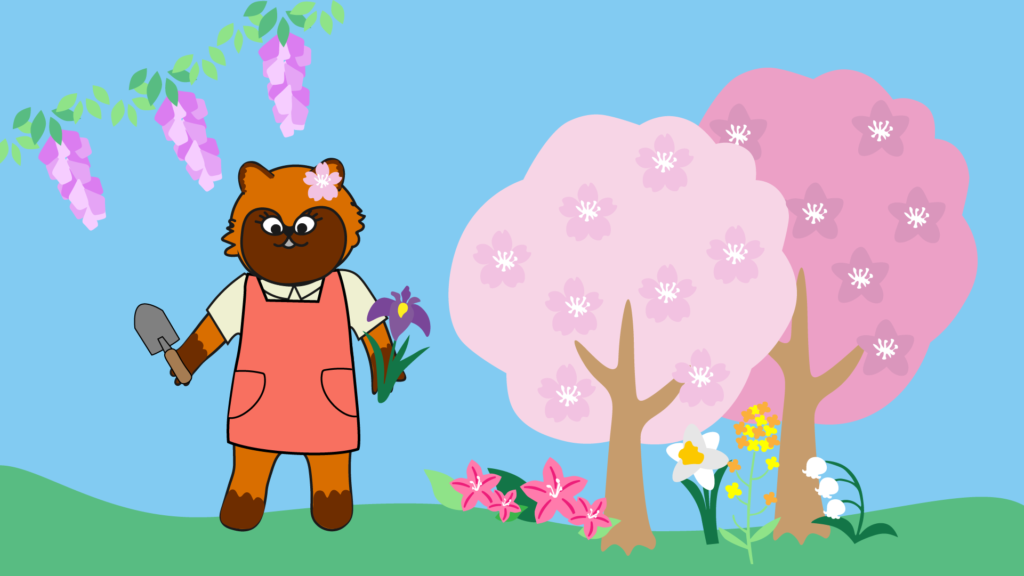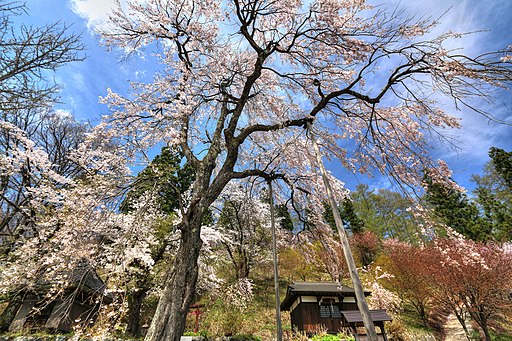Japanese Spring Flowers and Meanings
The spring season in Japan is full of beautiful and colorful flowers. There are many festivals and events that you can attend to see them! In addition, flowers have special meanings in Japan called hanakotoba(花言葉). This means “flower word” or “flower language” in Japanese.

Here are all the representative Japanese spring flowers and their meanings!
Sakura (Japanese Cherry blossoms)

くろふね, CC BY-SA 4.0, via Wikimedia Commons
One of the most iconic flowers in Japan is the sakura or Japanese cherry blossoms. These flowers are light pink and associated with the beginning of the school year in Japan. The trees differ from other cherry trees because the blossoms are bigger and lighter colored. If you come during spring time in Japan you won’t want to miss the cherry blossoms festivals, where people will picnic outside under the pink trees.
Symbolism/meaning: nobility, innocence, spiritual beauty, and spiritual love
Blooms during the end of March until late April depending on the location
Nanohana (rapeseed plant)

くろふね, CC BY-SA 4.0, via Wikimedia Commons
This Japanese spring flower directly translates to “vegetable flowers” and it is popular to eat as well as to enjoy as flowers. It can be compared to broccoli or broccoli rabe. In Japanese cuisine they are boiled or pickled. The flowers can be a beautiful yellow color, so keep an eye out for them during the springtime.
Symbolism/meaning: Cheerfulness and brightness
Blooms from mid March to early April
Momo (Peach blossoms)
松岡明芳, CC BY-SA 3.0, via Wikimedia Commons
In Japan, peach flowers are associated with girls day in March. These flowers are much more plentiful and more vibrant than the sakura blossoms. They have a cute image which fits perfectly with girls day. Throughout Japanese history, peach blossoms have been considered lucky and a symbol of being invincible.
Symbolism/meaning: luck, invincibility, fertility, charming
Blooms from early March until mid March.
Suzuran (Lily of the Valley)

itchys, CC BY 2.0, via Wikimedia Commons
These are tiny bell shaped flowers that grow in northern Japan. They signify the coming of the spring. It’s important to note that although they look small, they are actually poisonous if eaten.
Symbolism/meaning: Purity, humility, and returning happiness
Blooms from April to May
Tsutsuji (Japanese Azaleas)

Aney, CC BY-SA 3.0, via Wikimedia Commons
Tsutsuji are also an iconic flower of spring in Japan. Keep an eye out for various festivals where you’ll be able to see thousands of blooming flowers. In addition, these flowers grow in bushes and can vary in color from white, pink, to red.
Symbolism/meaning: Modesty, first love (white flowers), happiness of love (red flowers)
Blooms from April to May (after the sakura season)
Fuji (Japanese wisteria)

Takashi Hososhima from Tokyo, Japan, CC BY-SA 2.0, via Wikimedia Commons
A plant native to Japan, it is a beautiful vine plant with long draping clusters of flowers. The colors are a subdued purple and it is also a symbol of spring. Many Japanese paintings depict fuji as part of the scenic spring backdrop.
Symbolism/meaning: Kind, welcoming, loyal, and unforgettable
Blooms from April to June with the peak time in May.
Ayame (Japanese iris)

gorian21, CC BY 3.0, via Wikimedia Commons
Ayame is a popular flower in Japanese art throughout history. These can vary in color but are usually a purplish blue color. In addition, the stems and leaves are thin and green. The flowers grow in damp environments and are often seen near water and bridges!
Symbolism/meaning: Happiness will always come, good news, kind heart, and graceful.
Blooms from April to June, but the best time is the beginning of May.
Suisen (Daffodils)

Photo: Christian Ferrer / Wikimedia Commons
Although not native to Japan, they were introduced around the 10th century. They have been a popular spring flower in Japan. You can find all sorts of suisen events with fields covered in the white and yellow flowers.
Symbolism/meaning: Self love, respect, and mystery
Blooms from January to April.
I hope you’ve enjoyed learning about the different Japanese spring flowers and meanings! These make up the landscape of Japan during the springtime. If you’re looking for other Japanese culture blog content be sure to check out Religion in Japan: Shinto and Buddhism or Chopstick Etiquette in Japan: Rules you need to know!
~ Tanuki






